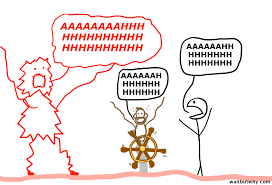The first step in emotional intelligence is being able to recognize and understand your emotions, and is also known as this
What is self awareness
Putting away these devices during study time is one solid time management technique
What is technology/cell phones
Tense shoulders, headaches, and sweaty palms represent these types of markers of stress

What are physical
Using different colored pens to highlight information is a strategy for this type of learner
What is visual
Repeating words from your partner's conversation and matching your partner's intensity in conversations is one way to show them you are doing this ("please pass the butter!!!") 
What is listening
This ability, to understand what others are feeling and experiencing is central to emotional intelligence

What is empathy
Keeping these in mind can remind you to stay on task and focused
What are your goals
Building in time to take a break, hang out with friends, or relax (also known as this) is extremely important to keep your life balance

What is self care
Recording lectures and also reading notes aloud are great strategies for these types of learners
Who are auditory
This communication style, which relies on backhanded compliments, is generally considered ineffective (if not, at times, hilarious) "I've always admired how you say whatever comes into your head without thinking...very brave."
What is passive aggressive
Expanding this, knowing more words for different emotions, can help you better identify what you and others are feeling
What is your vocabulary
Many students who procrastinate find their course corrected by this fictional character that we learned about in a Ted Talk

What is the panic monster
Doing more of this simple activity that we often take for granted can lower your stress levels significantly

What is breathing
Solitary learners, also known as this personality type, don't do well in large groups or distracting environments
Who are introverts
Mumbling, avoiding eye contact, and never asserting oneself is a marker of this communication style 
What is passive
While some might confuse this with empathy, it's actually an empty connection that can make other people feel worse
What is a sympathy
The panic monster lives in this quadrant, where we often feel under pressure to complete tasks quickly
What is quadrant 1
A daily practice in this activity, often used by Buddhists, can lead to much lower levels of stress - and you don't have to say "om"
What is meditation/mindfulness
These types of learners need real world examples and practical applications of theories
What are kinesthetic learners
This type of communication, how you stand and maintaining eye contact, is equally as important as the words you use
What is nonverbal
Aside from self-awareness, this skill (being able to manage your feelings and thinking before you act) is important
What is self-regulation
If you've determined that your work is important, but haven't procrastinated and done it ahead of time, you are in this healthy quadrant
What is quadrant 2
This kind of stress, the kind that can motivate you to action, is actually good and healthy
What is eustress
Social learners, also known as this personality type, learn best in groups and get energy from others
Who are extroverts
These type of communicators try to dominate others with nonverbal communication and body language and are generally quick to anger
Who are aggressive communicators